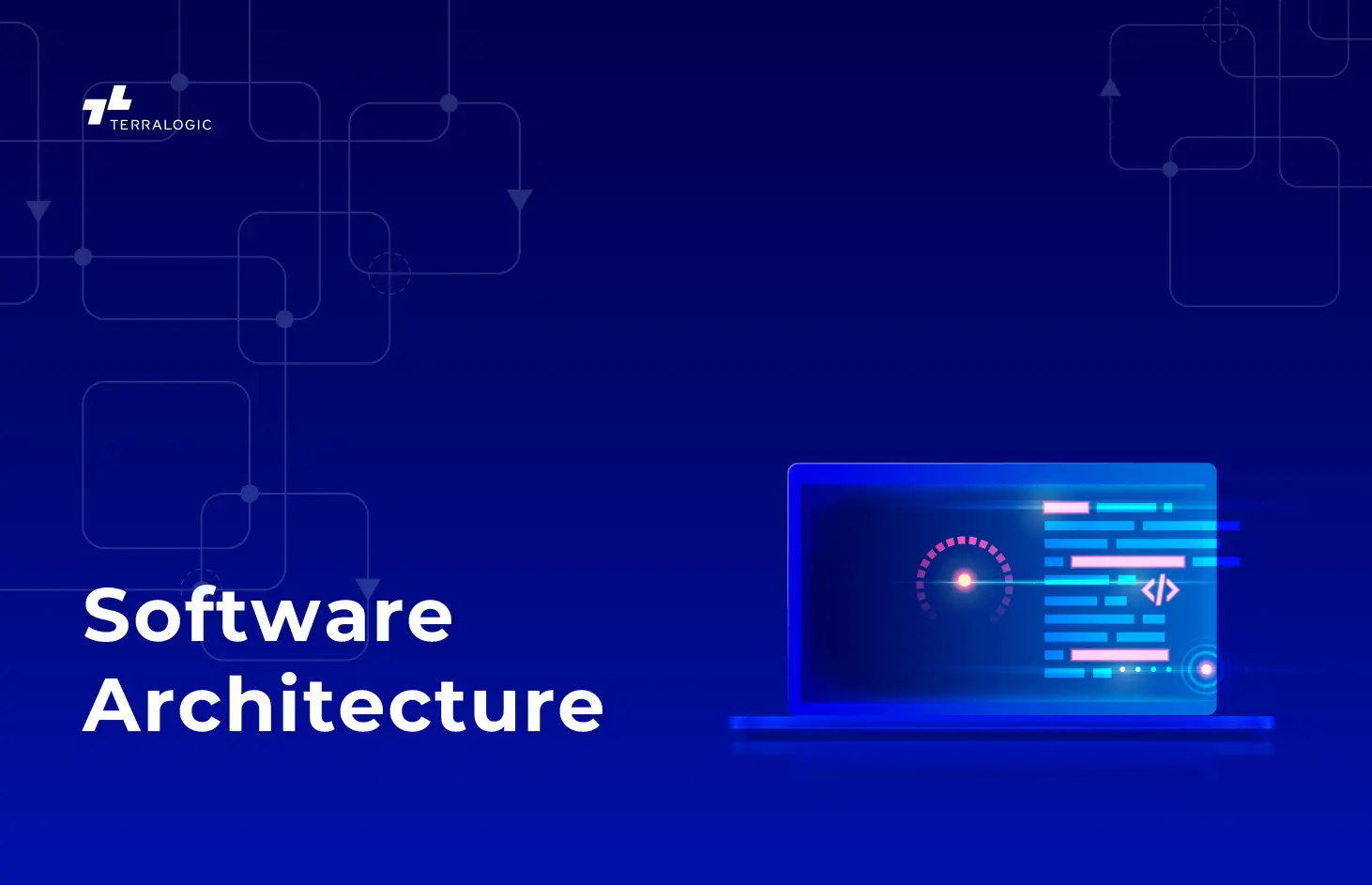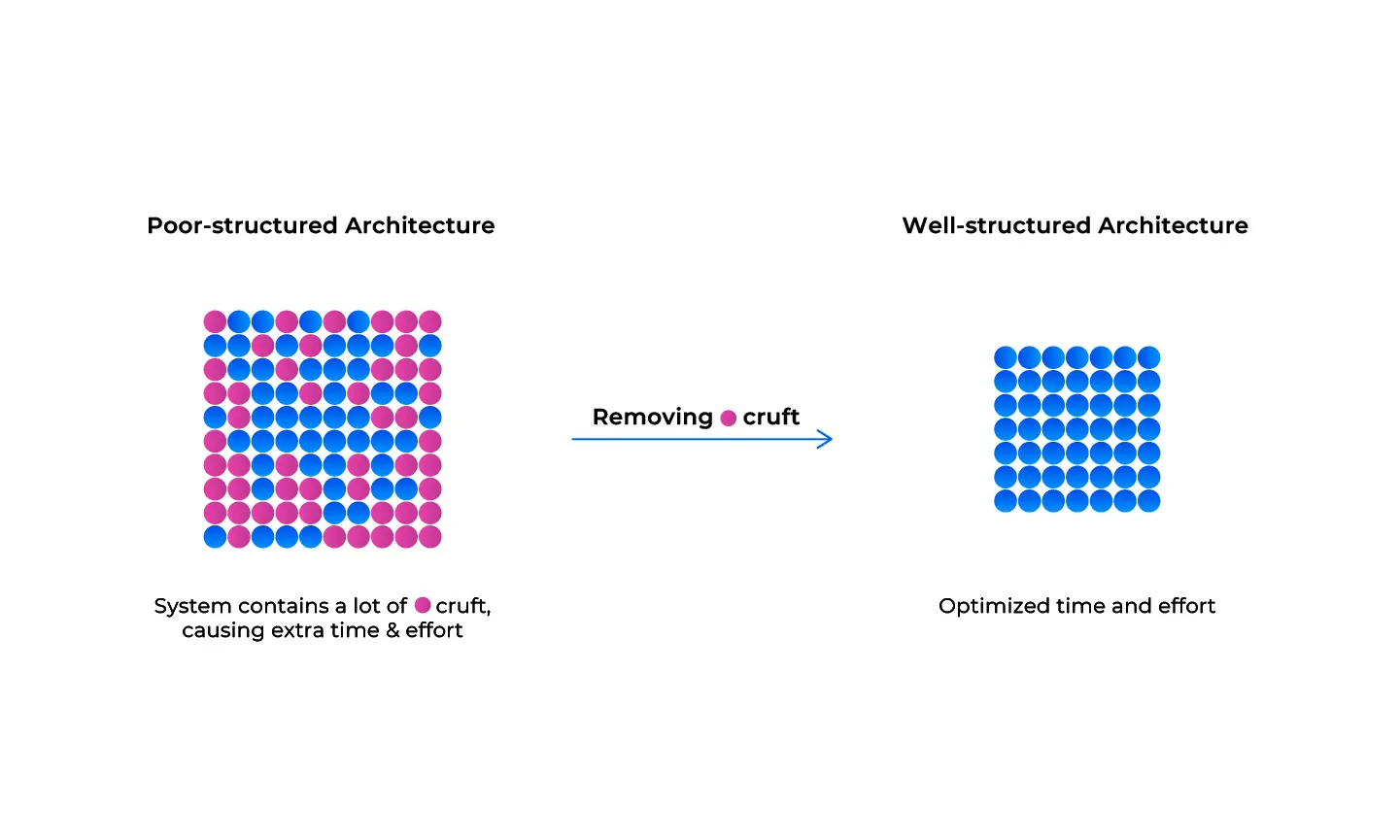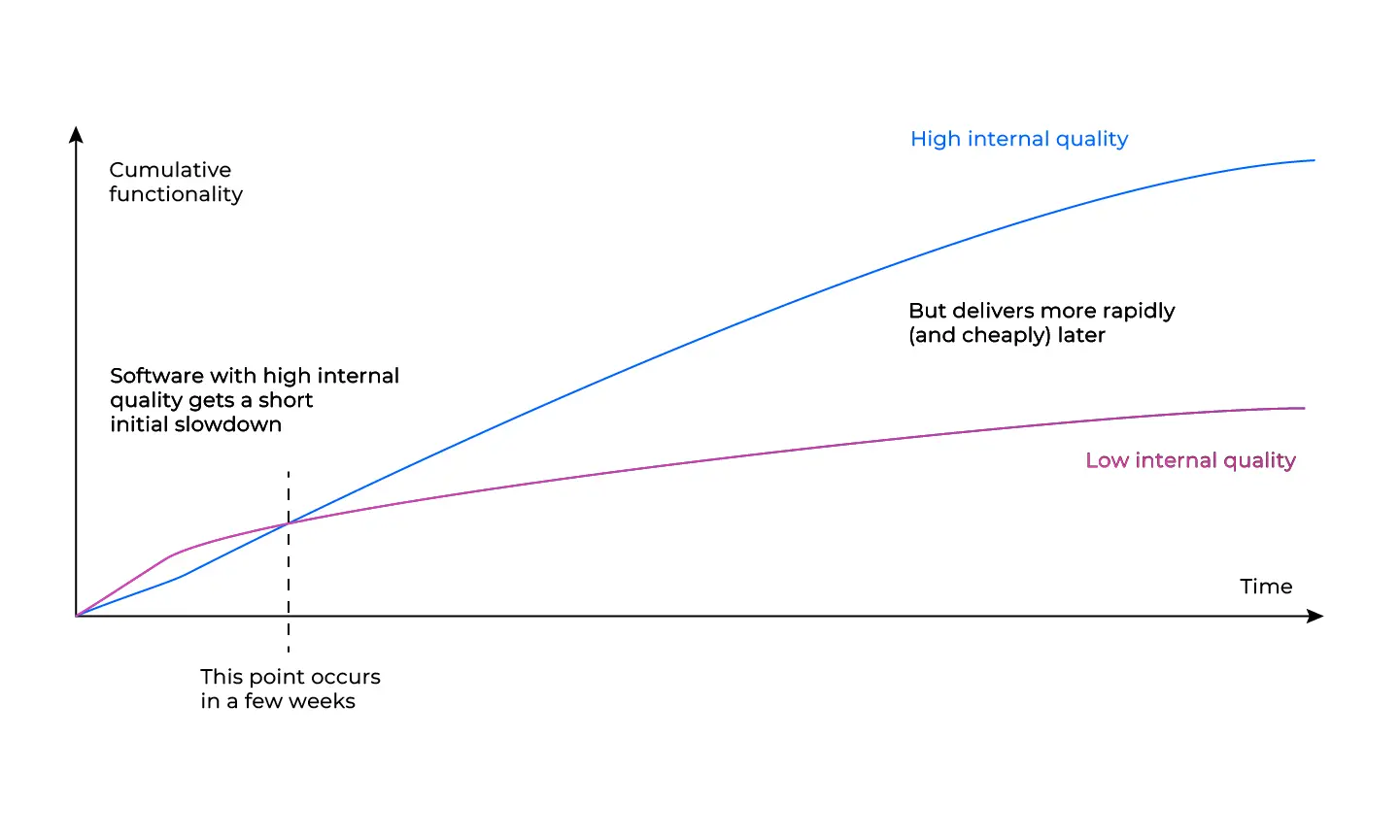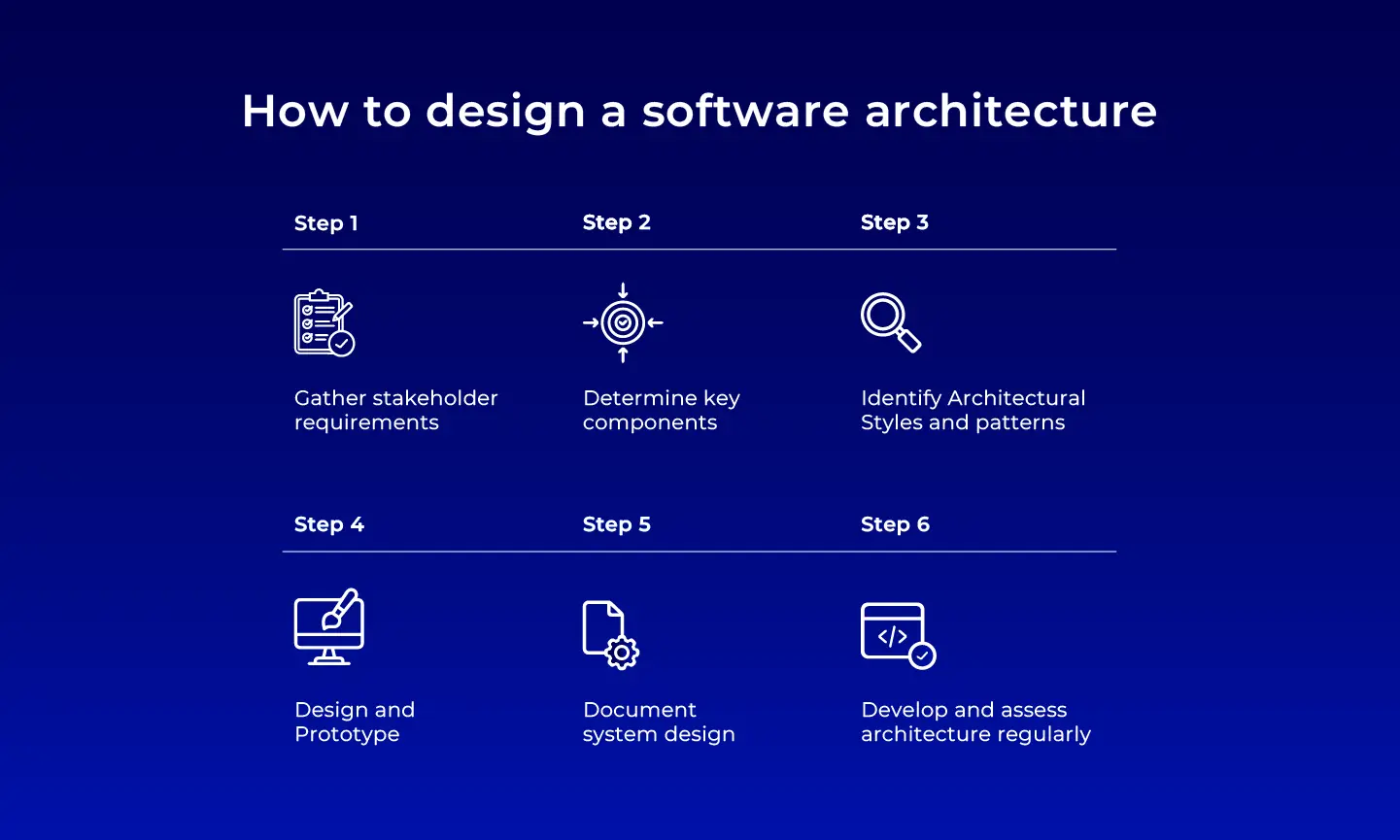What is Software Architecture? Why is it worth your investment in 2024?
May 7, 2024

In the past, developers often started writing source code without considering the overall software architecture. As a result, they often used a traditional layered (N-tier) architecture, dividing the system into multiple layers located in separate packages. This approach led to a disorganized collection of source code modules, which lacked clear relationships with each other.
As software applications become more complex and feature-rich, developers encounter challenges related to performance, security, and scalability. To tackle these challenges, businesses have started designing a well-structured architecture for their software.
So what is Software Architecture? Is it really important? And how can we build an effective architecture for software? Let’s explore this blog!
What is Software Architecture?
Fun fact: If you ask 10 software engineers, ‘What is software architecture?’ you will receive 11 different answers! Indeed, each person has a different interpretation of this concept, which can be confusing when exploring the topic. However, software architecture can be defined as follows:
Software Architecture (SA) is a blueprint that defines the fundamental organization of software systems. In other words, by looking at Software Architecture, you can understand how smaller elements are assembled and interact with each other in a particular system.
Why does Software Architecture Matter?
1. Software Architecture saves business resources
In today’s business environment, there is a significant emphasis on time-to-market in order to gain a competitive advantage. However, this approach puts great pressure on development teams to meet tight project timelines, often leading to compromises on constructing a well-structured software architecture.
As a result, while the software may still meet user expectations, its underlying source code is poorly organized (known as Crufts). And remember that software development is not a one-time attempt! The presence of Cruft makes it challenging for developers to understand the code, which prolongs the time needed to make modifications, even for small changes.
Alternatively, when development teams have time to build a well-structured architecture, developers can quickly grasp and fix the code with minimal defects. As a result, businesses can save significant time and resources that would otherwise be spent on fixing bugs. Let’s look at the below images created by Martin Fowler to see the differences!

The negative impact of Cruft (Fowler, 2019)
If you still wonder how long it takes to start experiencing the impact, the answer is that it typically slows down development work ONLY AFTER A FEW WEEKS! This conclusion has been supported by Martin Fowler, who gathered opinions from skilled developers and illustrated the findings in the graph below.

The trade-off between cost and internal quality (Fowler, 2019)
2. Software Architecture optimizes user experience
A good software architecture, though not directly visible to users, significantly impacts their experience. It provides the framework for implementing desired functionality, optimizing performance, and ensuring reliability. It also provides a solid foundation for the system to adapt to changing user needs.
Given that, the system can process efficiently with faster response times, and smoother interactions, resulting in improved user satisfaction.
3. Software architecture dispels B2B customer concerns
Functionality, performance, and reliability are important factors when developing or licensing software solutions. However, organizations also take into account:
- The compatibility of the software with existing IT systems
- Data security and protection
- Ease of maintenance and adaptability
Building a well-structured software architecture can ensure that the software can adapt to all of these requirements.
How to design a software architecture

1. Gather stakeholder requirements
The initial step in constructing a software architecture is to gather the functional and non-functional requirements of the software. This involves identifying user needs, system capabilities, and security requirements.
In addition, clarifying potential constraints is also crucial in this initial stage, which includes:
- Organizational constraints: Time, budget or human resources.
- Technical constraints: Frameworks, programming languages,…
- Regulatory constraints: Laws or contractual obligations.
By analyzing the gathered requirements above, you can form a conceptual blueprint of how the software will be structured to meet those needs.
Note: This blueprint is not a detailed version, but more like a rough sketch that will be refined and elaborated on throughout the following steps.
2. Determine key components
By breaking down the requirements further, you can identify the desired functionalities needed to integrate into the system to solve business problems. From there, you can determine the key components that handle specific functionalities, as well as how they interact with each other within the system.
By the end of this step, you will have a clearer picture of how the software will be broken down into functional units, which might refines the initial conceptual blueprint from previous step.
3. Identify Architectural Styles and patterns
An architectural style is a set of principles, rules, and constraints that guide the organization of code, defining the layers and modules of an application and how they interact. Meanwhile, architectural patterns are proven solutions that address specific challenges within an architectural style. They provide a more detailed blueprint for how to implement the chosen style.
There are different architectural styles, each with its advantages and trade-offs. From your understanding of the system, you can consider different factors like its complexity, scalability, maintainability,… to choose the most suitable style for your case.
4. Design and Prototype
This is the stage where you turn your conceptual ideas into a more tangible model, which helps you identify and address potential issues before diving headfirst into coding.
First, you should use diagrams and flowcharts to illustrate how data flows between components. And then, map out user journeys and visualize how components interact to fulfill user requests.
As you finalize the system design, you can apply prototyping tools to create a non-functional version of your software architecture for testing. This facilitates early feedback, helping you identify areas where the design might need to be refined before development work begins.
5. Document system design
Despite the importance of software architecture documentation, did you know that most businesses still struggle to document effectively?
Any bad documentation practices might cause misunderstandings among stakeholders (developers, testers, software architects, future maintainers,…). As the software evolves, undocumented changes become difficult to understand and maintain. This can significantly increase the time and resources needed to fix bugs or add new features.
A thorough software architecture document needs to include essential elements, including:
- Software architecture diagrams and visual representations
- System components and their interactions
- Design decisions and rationale
- Non-functional requirements and constraints
This helps foster shared understanding among stakeholders, reducing confusion and wasted effort.
6. Develop and assess architecture regularly
Now, it’s time to proceed with the coding and testing phase of the software based on the documented architecture. Once the testing practices are completed, the software can be deployed to a production environment.
Keep in mind that software architecture is not a one-time activity; rather, it is an ongoing process. Throughout the software lifecycle, regular assessment and adjustment of the architecture are necessary to accommodate shifts in the business requirements.
You may want to read more: Why has Vietnam become the top Software Development Outsourcing country in APAC?
Final thought
Through this blog, you’ve understood why establishing a solid architecture is worth it! As mentioned earlier, this investment will pay off after a few weeks for development teams. While the software architecture development process can be challenging, the benefits it brings far exceed the initial effort.
If your team is currently overwhelmed with other tasks or lacks the necessary personnel to handle this work, outsourcing can be a suitable solution!
If you’re unsure about where to begin or how to proceed, our team of software development experts is available to assist you. Feel free to contact us and schedule a free consultation today!
Keep reading about
LEAVE A COMMENT
We really appreciate your interest in our ideas. Feel free to share anything that comes to your mind.
Our 16 years of achievements includes:
-
10M+
lines of codes
-
2400+
projects completed
-
900+
satisfied clients
-
16+
countries served




